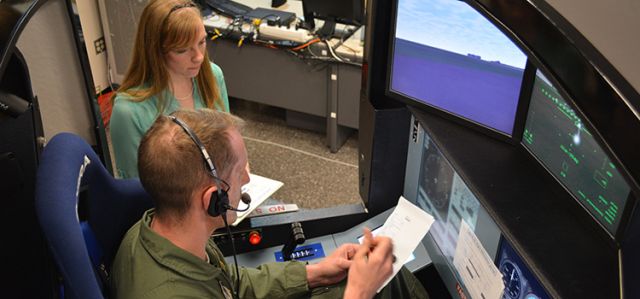The Experimental Evaluation of a Methodology to Surrogate Fuel Formulation for the Emulation of Combustion Kinetic Phenomena by a Theory of Real Fuel Oxidation
Document Type
Article
Publication Date
4-2012
Publication Source
Combustion and Flame
Abstract
A methodology for the formulation of surrogate fuels for the emulation of real fuel gas phase combustion kinetic phenomena pertinent to gas turbine combustion is described and tested. A mixture of n-dodecane/iso-octane/1,3,5-trimethylbenzene/n-propylbenzene is formulated in a predictive manner to exhibit the same gas phase combustion phenomena of a target Jet-A fuel by the sharing of fundamentally significant combustion property targets in addition to a prescribed commonality of chemical kinetically controlling intermediate species. The appropriateness of the surrogate formulation technique is demonstrated by the experimental measurement of various gas phase combustion kinetic phenomena of the proposed surrogate mixture and of the target Jet-A fuel:
- (1)
-
A variable pressure flow reactor is used to chart the chemical reactivity of a stoichiometric mixture of surrogate fuel/O2/N2 at 12.5 atm and 500–1000 K, for a residence time of 1.8 s at a fixed carbon content of 0.3%.
- (2)
-
The autoignition behavior of stoichiometric mixtures of surrogate fuel in air is measured with a shock tube at 667–1223 K at ∼20 atm and also with a rapid compression machine at 645–714 K at compressed pressures of 21.7 atm.
- (3)
-
Detailed measurements of the intermediate species formed in the high temperature oxidation of the target fuel and in the oxidation of the surrogate fuel are performed with a shock tube for reaction times of 1.23–3.53 ms at 18–35 atm and 901–1760 K for 0.0808/0.158/0.1187 mole% mixtures of C/H/O2.
- (4)
-
The laminar burning velocity and strain extinction limits of premixed mixtures of surrogate fuel in O2/N2 are determined by the counter flow twin flame technique. These phenomena are also determined for premixed mixtures of the target fuel and for a previously proposed surrogate fuel composed of n-decane/iso-octane/toluene in O2/N2.
- (5)
-
The high temperature chemical reactivity and chemical kinetic–molecular diffusion coupling of the surrogate fuel is evaluated by measurement of the strained extinction limits of diffusion flames.
- (6)
-
The propensity of surrogate and real fuel to form soot is tested by laser extinction measurements of the soot volume fractions formed by each fuel in a wick-fed laminar flame diffusion burner as a function of the radial distance of each flame.
These experimental data are compared to those previously reported at identical conditions for the target Jet-A fuel and for a similar n-decane/iso-octane/toluene surrogate fuel. A conceptual theory of real fuel oxidation is proposed and the similarity of the exhibited combustion phenomena of all three fuels is analyzed and interpreted in this context in order to (a) further evaluate the proposed strategy to surrogate fuel formulation and the appropriateness of the proposed theory to real fuel oxidation, (b) evaluate the appropriateness of the proposed n-dodecane/iso-octane/1,3,5-trimethylbenzene/n-propylbenzene mixture as a surrogate fuel for the target Jet-A fuel, and (c) to provide direction for the development of a tractable numerical modeling framework to compute real fuel multiphase combustion phenomena.
Inclusive pages
1444-1466
ISBN/ISSN
0010-2180
Copyright
Copyright © 2011, Combustion Institute
Publisher
Elsevier
Volume
159
Issue
4
Peer Reviewed
yes
eCommons Citation
Dooley, Stephen; Won, Sang Hee; Heyne, Joshua S.; Farouk, Tanvir I.; Ju, Yiguang; Dryer, Frederick L.; Kumar, Kamal; Hui, Xin; Sung, Chih-Jen; Wang, Haowei; Oehlschlaeger, Matthew A.; Iyler, Venkatesh R.; Iyler, Suresh; Litzinger, Thomas A.; Santoro, Robert J.; Malewicki, Tomasz; and Brezinsky, Kenneth, "The Experimental Evaluation of a Methodology to Surrogate Fuel Formulation for the Emulation of Combustion Kinetic Phenomena by a Theory of Real Fuel Oxidation" (2012). Mechanical and Aerospace Engineering Faculty Publications. 231.
https://ecommons.udayton.edu/mee_fac_pub/231
COinS




Comments
Permission documentation on file.